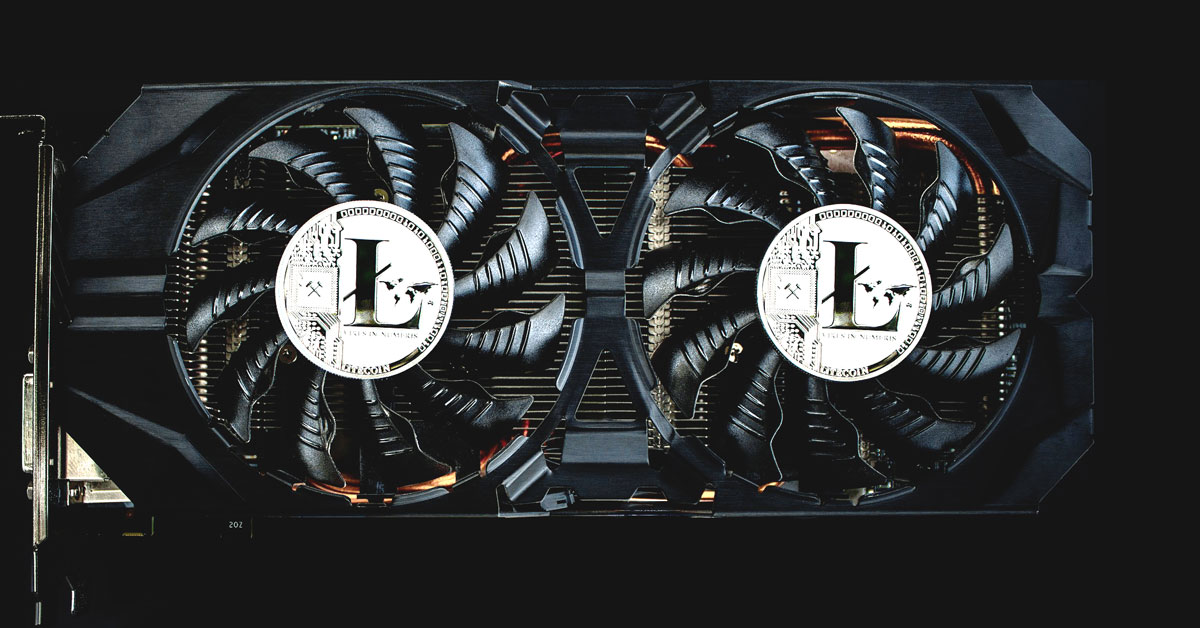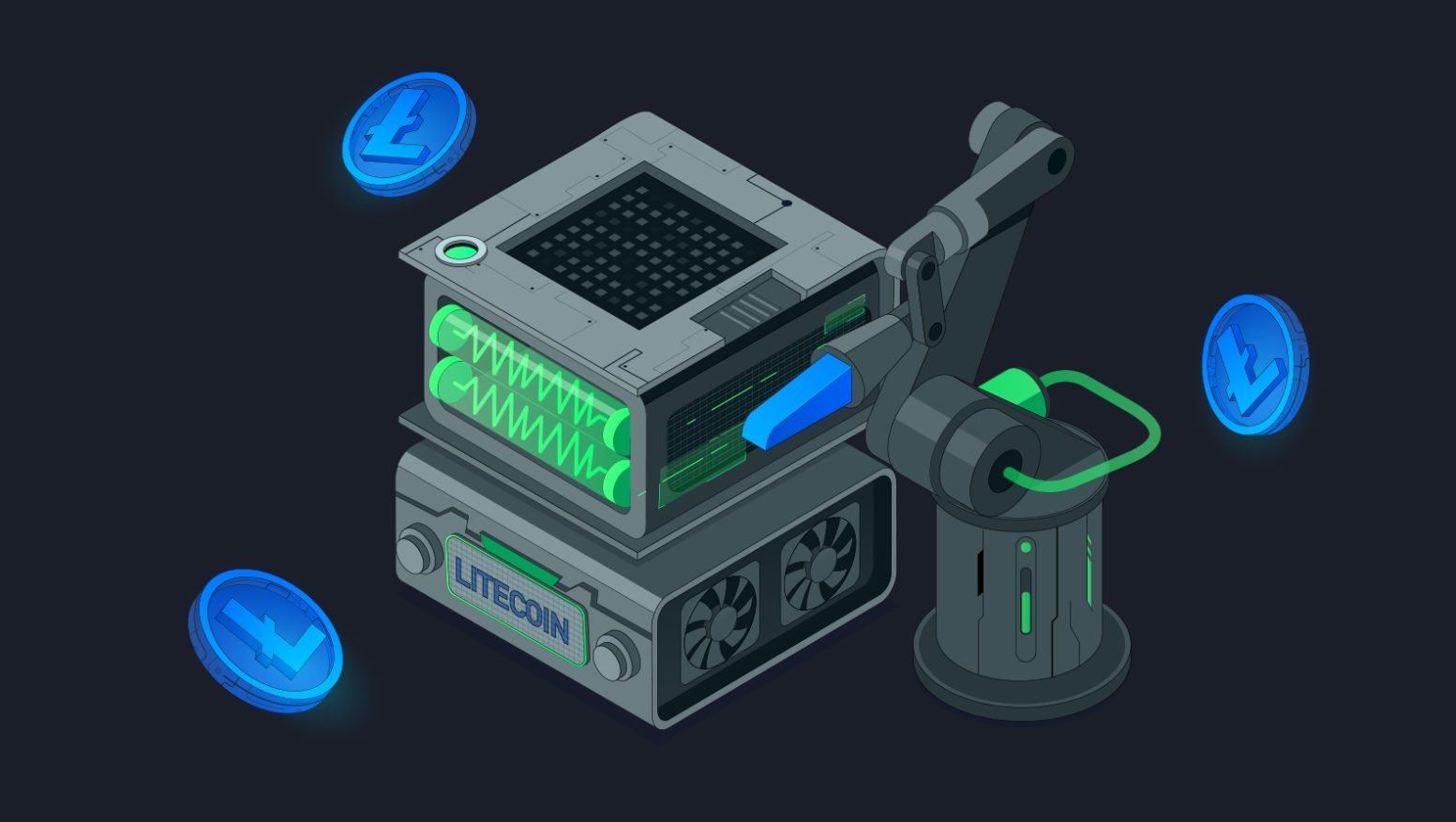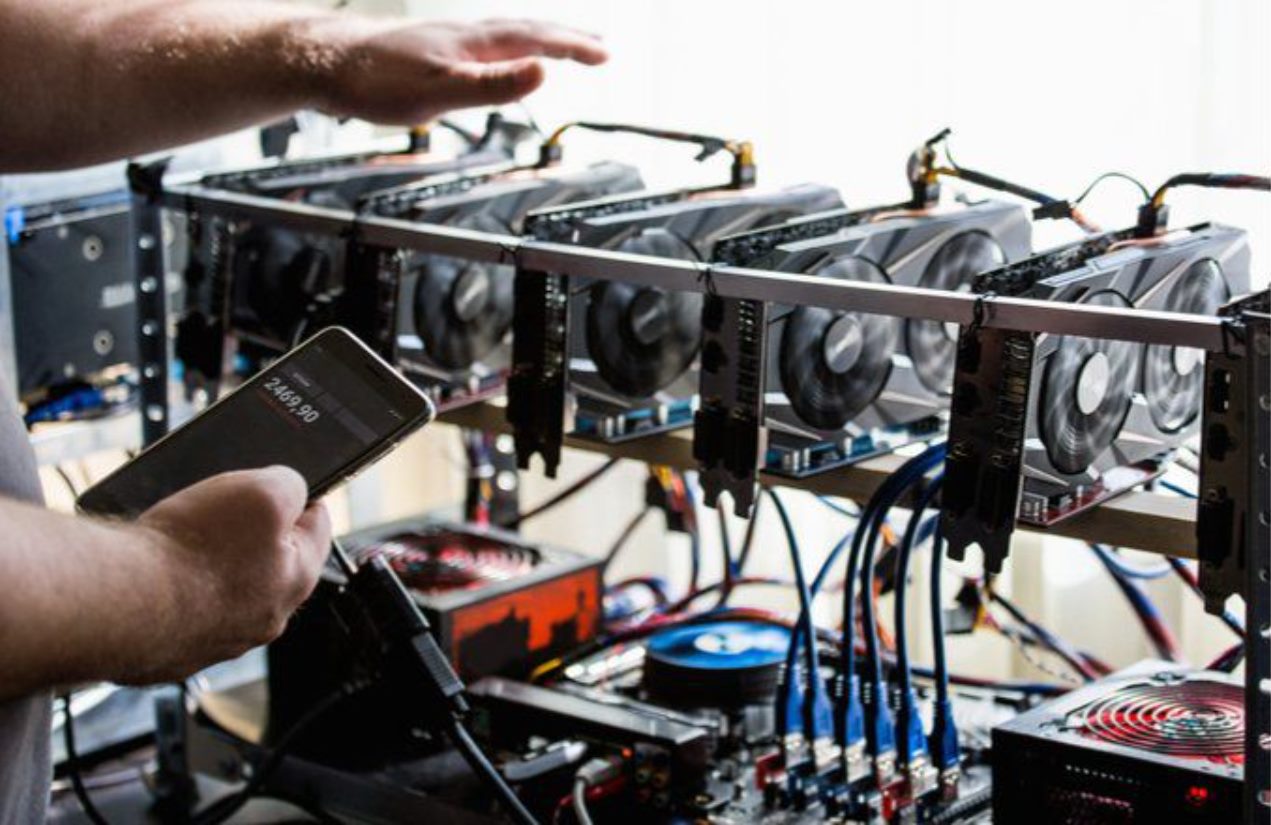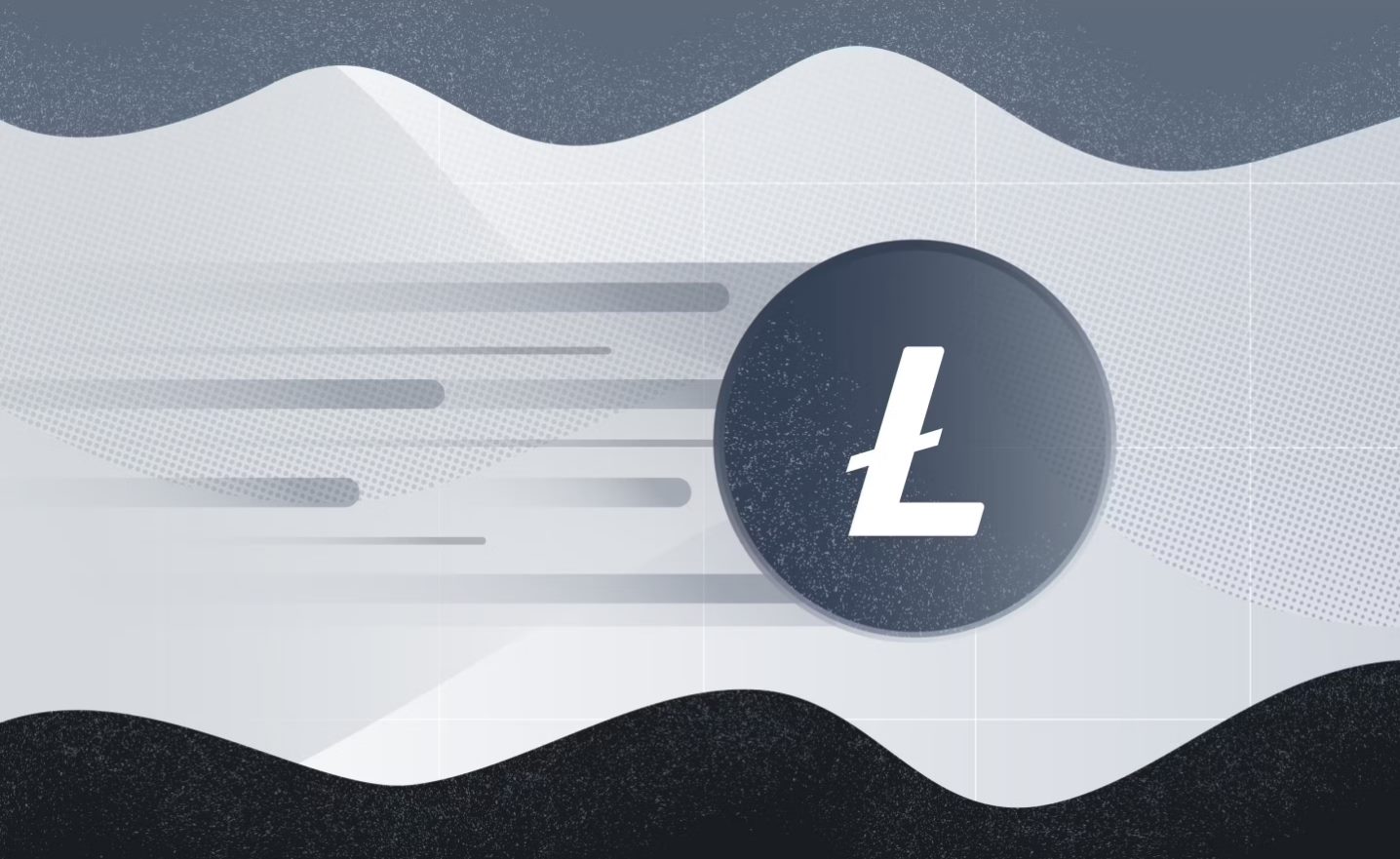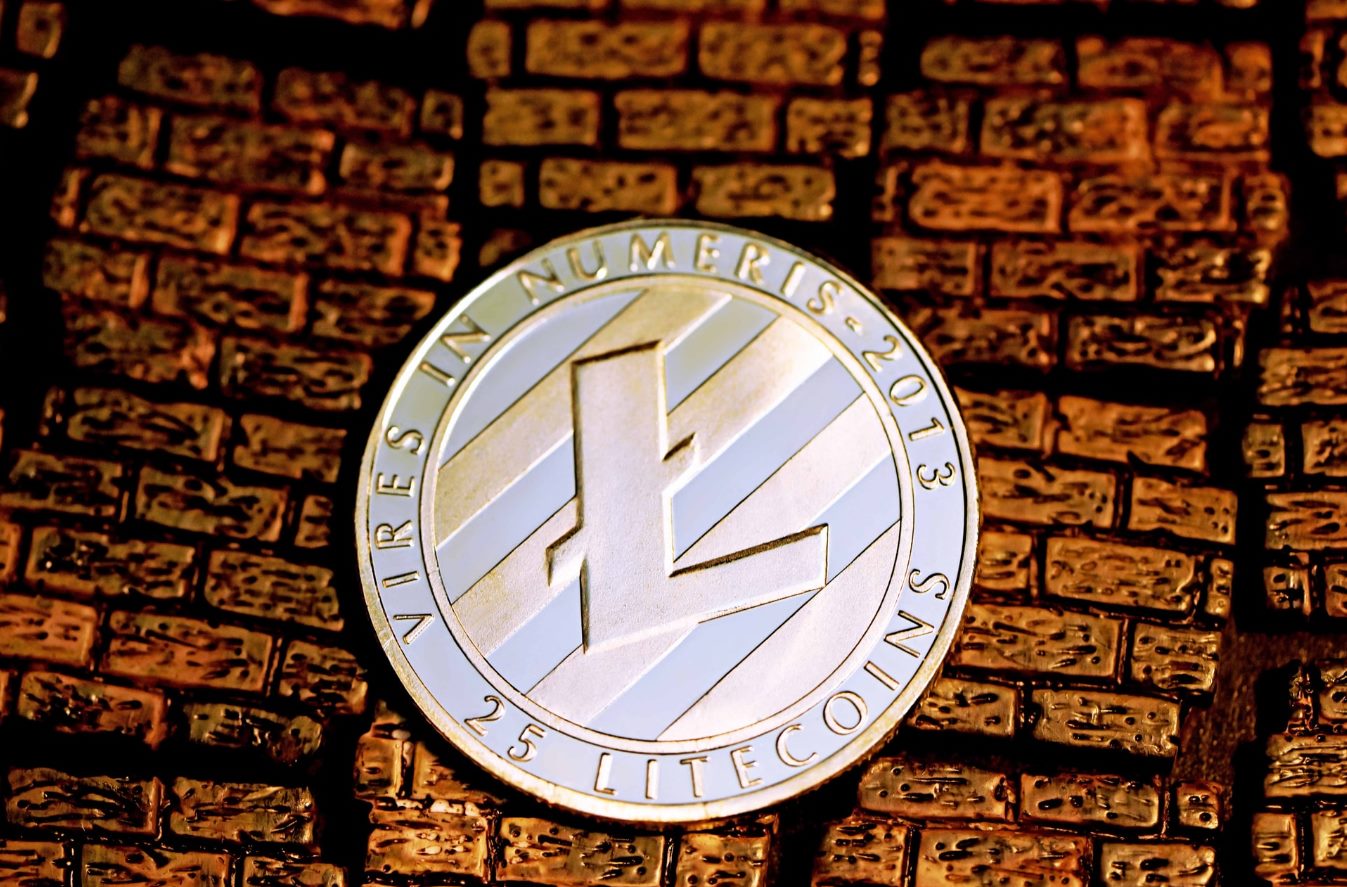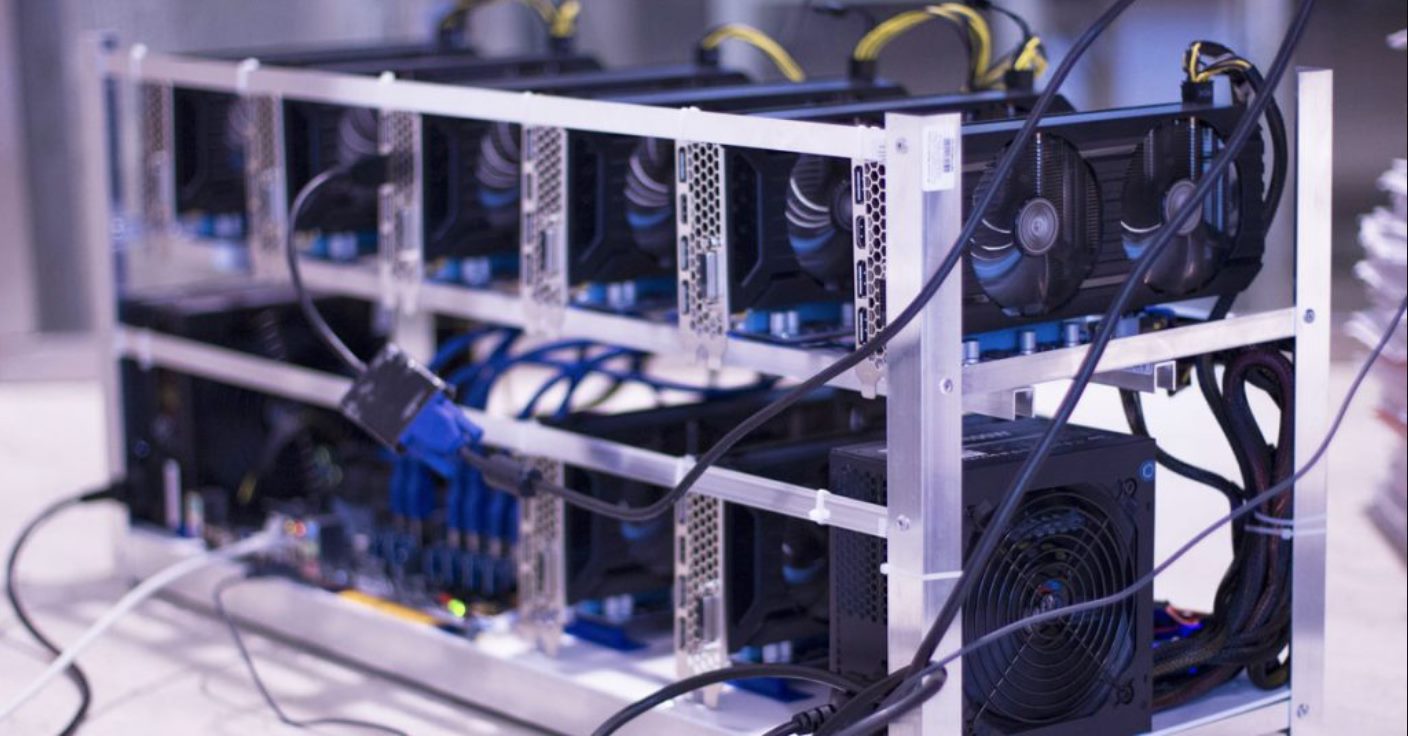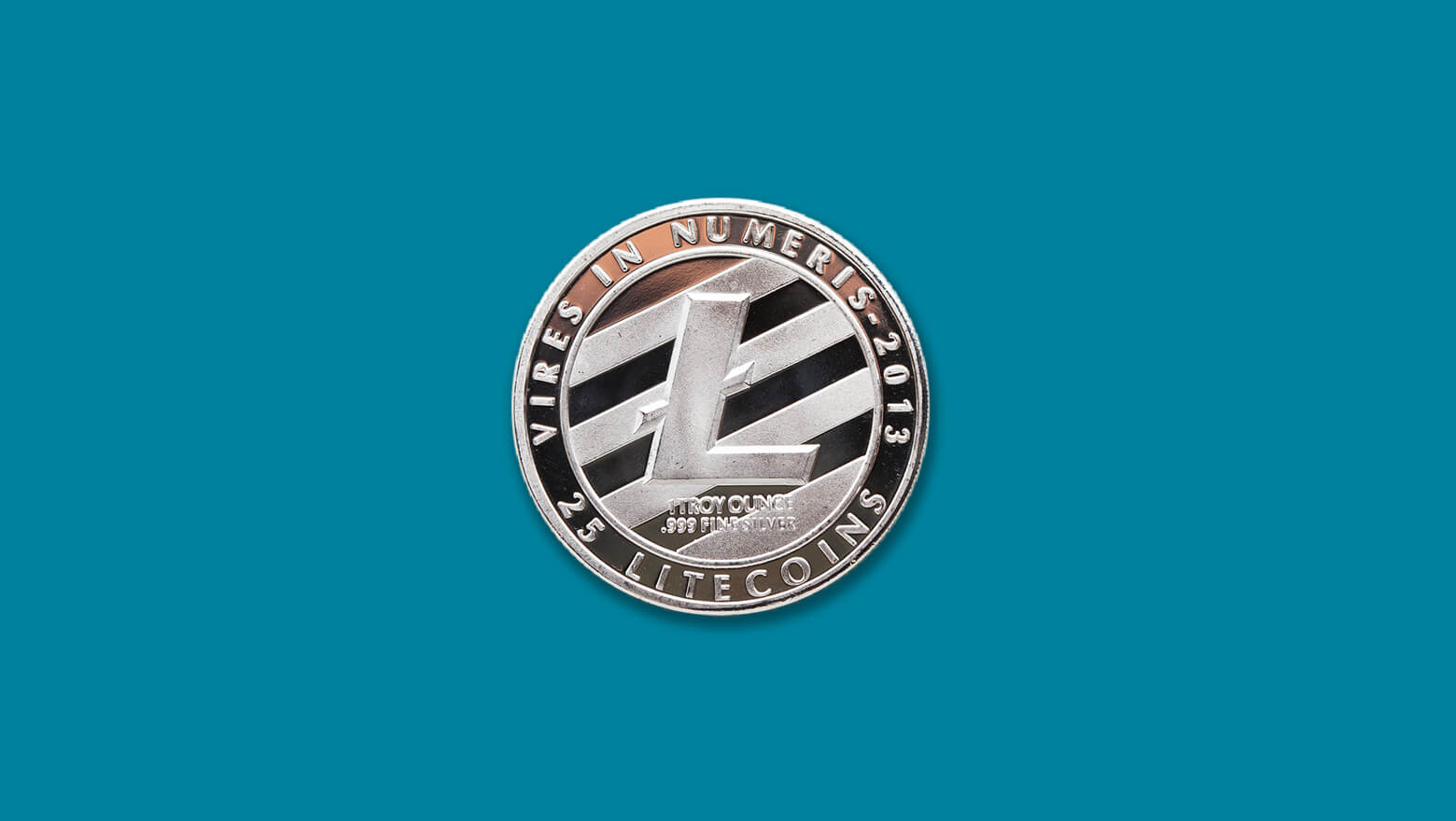Introduction
Welcome to the world of Litecoin mining, where digital currency enthusiasts can take part in the creation and distribution of a popular alternative cryptocurrency. In this article, we will explore the concept of Litecoin mining and its significance in the ever-evolving world of digital currencies.
Litecoin, often referred to as the silver to Bitcoin’s gold, was created in 2011 by Charlie Lee, a former Google engineer. Like Bitcoin, Litecoin is a decentralized digital currency that can be used for online transactions. However, it is designed to be faster and more scalable than Bitcoin, making it a popular choice among cryptocurrency enthusiasts and investors.
Mining, in the context of cryptocurrencies, refers to the process of verifying and recording transactions on a blockchain network. Miners play a crucial role in maintaining the integrity and security of the network by solving complex mathematical problems using specialized hardware.
In this article, we will delve into the inner workings of Litecoin mining, explore the process of setting up a mining rig, discuss the importance of mining pools, and examine the future prospects of Litecoin mining.
Whether you are a seasoned cryptocurrency miner or a newcomer looking to enter the world of digital currencies, this article will provide you with valuable insights and practical tips to help you understand and navigate the world of Litecoin mining.
What is Litecoin?
Litecoin is a peer-to-peer digital currency that was created in 2011 by Charlie Lee. Often referred to as “the silver to Bitcoin’s gold,” Litecoin operates on a decentralized network that allows users to securely send and receive funds without the need for intermediaries such as banks or governments. It is built on the same underlying technology as Bitcoin, known as blockchain, but with a few key differences.
One of the main differences between Litecoin and Bitcoin is the transaction confirmation time. While Bitcoin transactions can take around 10 minutes to confirm, Litecoin transactions are typically confirmed in just 2.5 minutes. This faster confirmation time makes Litecoin a more practical choice for everyday transactions, such as purchasing goods and services online.
Another notable difference is the algorithm used for mining. Bitcoin uses the SHA-256 algorithm, which requires powerful hardware known as ASICs (Application-Specific Integrated Circuits) to mine efficiently. On the other hand, Litecoin uses the Scrypt algorithm, which was specifically designed to be resistant to ASIC mining. This means that Litecoin mining can still be done effectively using consumer-grade hardware like CPUs and GPUs.
Litecoin also has a higher maximum supply than Bitcoin. While the total supply of Bitcoin is capped at 21 million coins, Litecoin has a maximum supply of 84 million coins. This larger supply helps to mitigate concerns about scarcity and allows for a broader distribution of the currency.
Despite some similarities to Bitcoin, Litecoin has its own dedicated community and ecosystem. It has gained popularity over the years as a trusted and established cryptocurrency, with a strong track record of stability and security.
Litecoin can be used for a wide range of purposes, including online purchases, remittances, and peer-to-peer transactions. It has also become a popular investment option, with many people seeing it as a promising digital asset that offers potential long-term growth.
In the next sections, we will explore the process of mining Litecoin and discuss the various factors and considerations involved. Whether you are interested in mining for profit or simply want to understand the inner workings of this fascinating digital currency, continue reading to discover more about Litecoin mining.
What is Mining?
Mining is a fundamental process in the world of cryptocurrencies, including Litecoin. It involves the validation and verification of transactions on the blockchain network. Miners use their computational power to solve complex mathematical problems, and when they successfully solve these problems, they are rewarded with newly minted coins.
In essence, mining serves two main purposes. First, it contributes to the security and integrity of the network by validating transactions and preventing fraudulent activities. Second, it introduces new coins into circulation, ensuring a steady supply and incentivizing miners to participate in the network.
The process of mining can be seen as a competition among miners to be the first to solve a mathematical problem. This problem requires a significant amount of computational power to solve, and the miner who successfully solves it broadcasts their solution to the network for verification.
Once the solution is verified by the network, the miner is rewarded with a certain amount of newly created coins. In the case of Litecoin, the current reward for each mined block is 12.5 Litecoins, but this reward is halved approximately every four years as part of the coin’s predetermined inflation schedule.
The mining process also plays a crucial role in the overall security of the blockchain network. In order to modify a previously verified block, an attacker would need to expend an immense amount of computational power to recalculate the solution for that particular block. This makes the blockchain resistant to tampering and ensures the immutability of the transaction history.
It is important to note that mining cryptocurrencies like Litecoin requires specialized hardware and software. Miners typically use powerful computer systems equipped with GPUs (Graphics Processing Units) or specialized ASICs (Application-Specific Integrated Circuits) to maximize their mining efficiency.
In the following sections, we will discuss how Litecoin mining works in more detail, including the process of setting up a mining rig, joining mining pools, and the various factors to consider before embarking on your mining journey. Keep reading to gain a deeper understanding of the exciting world of Litecoin mining.
How Does Litecoin Mining Work?
Litecoin mining operates on a Proof-of-Work (PoW) consensus algorithm, similar to Bitcoin and other cryptocurrencies. It involves solving complex mathematical problems using computational power to validate and record transactions on the Litecoin blockchain.
The mining process begins with miners collecting groups of unconfirmed transactions, known as a block. Miners then compete to solve a cryptographic puzzle by repeatedly hashing the block’s data until they find a solution that meets the specified criteria. This is known as finding a “nonce,” a random value that, when combined with the block’s data, produces a hash with a certain number of leading zeros.
The computational power required to find a solution is measured in hashes per second (H/s), and it is crucial for miners to have powerful hardware capable of performing a high number of calculations quickly. This is why most miners use GPUs (Graphics Processing Units) or specialized ASICs (Application-Specific Integrated Circuits) for efficient mining.
Once a miner finds a valid nonce and generates a hash that meets the required criteria, they add the block of transactions to the existing blockchain. This process verifies the authenticity of the transactions and ensures that they cannot be tampered with. As a reward for their efforts, the miner is granted a certain number of Litecoins, which serves as an incentive to participate in the mining process.
As the mining ecosystem grows and more miners join the network, the difficulty of finding a valid solution adjusts dynamically to maintain a consistent block time. In the case of Litecoin, the difficulty is recalculated every 2,016 blocks, or approximately every 3.5 days, based on the total computational power of the network.
Mining difficulty ensures that new blocks are added to the blockchain at a predictable rate, maintaining the integrity and security of the network. It prevents blocks from being generated too quickly or too slowly, thus maintaining a stable and secure ecosystem for Litecoin transactions.
In recent years, due to the increasing computational power required for efficient mining, individual miners often join mining pools. Mining pools are groups of miners who collaborate and combine their computational power to increase their chances of finding a valid solution and earning a reward. By pooling resources, miners can generate a more consistent income, although the rewards are split among all contributing members based on their individual contributions.
In the next sections, we will explore the process of setting up a Litecoin mining rig, discuss the different mining hardware options, and provide guidance on joining mining pools or mining Litecoin on your own. Continue reading to learn more about the practical aspects of Litecoin mining.
Why Mine Litecoin?
With the ever-growing popularity of cryptocurrencies, you may be wondering why mining Litecoin is a worthwhile endeavor. Here are some compelling reasons why many individuals and entities choose to mine Litecoin:
1. Potential Profitability: Mining Litecoin can be a lucrative venture, especially when the value of Litecoin rises. With each successfully mined block, miners are rewarded with a set amount of Litecoins. If the price of Litecoin appreciates, the value of the earned coins can increase significantly over time.
2. Transaction Validation: Miners play a crucial role in ensuring the validity and integrity of Litecoin transactions. By mining and verifying transactions, miners contribute to the overall security and trustworthiness of the Litecoin network.
3. Decentralization: Cryptocurrencies are designed to be decentralized, and mining helps maintain that decentralization. When individuals participate in mining, it prevents a single entity or group from controlling the majority of the mining power. This decentralized approach fosters a more democratic and resilient network.
4. Support the Blockchain: By mining Litecoin, you are actively supporting the blockchain technology that underlies cryptocurrencies. The blockchain revolution has the potential to disrupt various industries and revolutionize the way transactions are conducted globally. Mining contributes to the growth and development of the blockchain ecosystem as a whole.
5. Learn About Cryptocurrencies: Mining Litecoin provides an opportunity to learn more about cryptocurrencies, blockchain technology, and the intricacies of the mining process. It allows you to gain firsthand experience and knowledge in this rapidly evolving field, which can be valuable for future endeavors or investment decisions.
6. Community Participation: The Litecoin community is vibrant and passionate, and mining allows you to become an active participant in this community. You can engage with fellow miners, share insights, and contribute to the advancement of Litecoin’s ecosystem.
7. Diversify Investment Portfolio: For individuals with a keen interest in cryptocurrencies, mining Litecoin can be an attractive way to diversify their investment portfolio. By mining and holding Litecoins, you have the potential to benefit from both the mining rewards and any potential price appreciation.
8. Support the Litecoin Network: As more miners participate in mining Litecoin, the network becomes more secure and robust. By joining other miners in validating transactions and adding blocks to the Litecoin blockchain, you are helping to strengthen the network and ensure its longevity.
These are just a few of the reasons why mining Litecoin can be a rewarding and fulfilling pursuit. Whether it is for financial gain, technological curiosity, or supporting the decentralized ethos of cryptocurrencies, mining Litecoin offers numerous benefits for individuals and the broader cryptocurrency ecosystem.
The Process of Mining Litecoin
Mining Litecoin involves a series of steps that require specialized hardware, software, and a deep understanding of the mining process. Here’s an overview of the key steps involved:
1. Obtain Mining Equipment: To start mining Litecoin, you will need suitable mining hardware. In the early days, Litecoin could be effectively mined using CPU (Central Processing Unit) or GPU (Graphics Processing Unit) on a standard computer. However, as the mining difficulty has increased, specialized mining equipment such as ASICs (Application-Specific Integrated Circuits) have become more prevalent.
2. Choose a Mining Software: After obtaining the necessary hardware, you will need to select and install mining software on your computer. The mining software establishes a connection with the Litecoin network and enables your hardware to participate in mining. Popular mining software options include CGMiner, BFGMiner, and EasyMiner.
3. Join a Mining Pool (Optional): Joining a mining pool allows you to combine your mining power with other miners to increase your chances of earning regular mining rewards. In a pool, miners work together to solve mathematical problems, and rewards are distributed among participants based on their contributions. Some well-known mining pools for Litecoin include Litecoinpool.org, Antpool, and F2Pool.
4. Configure Mining Settings: Once you have chosen a mining pool, you will need to configure your mining software with the necessary settings. This includes providing your pool’s URL, your mining account details, and any specific parameters required by your mining software.
5. Start Mining: With your hardware, software, and settings in place, you can now start the mining process. The mining software will begin performing complex calculations to find a valid solution for the current block. As your hardware contributes towards solving these mathematical problems, you will earn a share of the mining rewards.
6. Monitor and Optimize: It is important to regularly monitor your mining operation to ensure everything is running smoothly. Keep an eye on factors such as temperature, power consumption, and hash rate. Optimization techniques, such as adjusting hardware settings or fine-tuning mining software parameters, may be necessary to maximize mining efficiency and profitability.
7. Secure Your Earnings: As you mine Litecoin and earn rewards, it is crucial to securely store your coins. Set up a Litecoin wallet and ensure you follow best practices for wallet security, such as using strong passwords and enabling two-factor authentication.
8. Stay Informed: The world of mining is dynamic, and staying informed about the latest developments, mining software updates, and market trends can help you make informed decisions. Engage with the Litecoin community through forums, social media platforms, or dedicated mining websites to stay up to date with the latest information.
Mining Litecoin can be a rewarding experience, but it requires careful planning, investment in appropriate hardware, and ongoing monitoring of your mining operation. By following these steps and staying informed, you can participate in the mining process and contribute to the stability and security of the Litecoin network.
Choosing the Right Mining Hardware
Choosing the right mining hardware is a critical step in maximizing your mining efficiency and profitability. The right hardware will provide the necessary computational power to solve complex mathematical problems and earn mining rewards. Here are some factors to consider when selecting mining hardware for Litecoin:
1. Hash Rate: The hash rate indicates the speed at which a mining machine can perform calculations. A higher hash rate means more calculations can be performed, increasing the chances of finding a valid solution. When comparing mining equipment, look for high hash rates to maximize your mining potential.
2. Power Efficiency: Mining requires a considerable amount of electricity, so it is essential to choose hardware that is power efficient. Hardware with a higher hash rate may consume more power, resulting in higher electricity costs and reduced profitability. Look for mining equipment that offers a balance between hash rate and power consumption.
3. Compatibility: Ensure that the mining hardware you choose is compatible with the mining software you plan to use. Different mining software may have specific requirements or be optimized for certain hardware types. Research the hardware compatibility with your desired mining software to ensure a smooth mining experience.
4. Longevity and Reliability: Investing in mining hardware is a financial commitment, so it is crucial to choose equipment from reputable manufacturers known for longevity and reliability. Look for hardware that has a proven track record of durability and minimal failure rates.
5. Cost: Mining hardware can range in price, so it is essential to consider your budget when selecting equipment. While more expensive hardware may offer higher hash rates, it may not always be the most cost-effective option. Consider the initial investment cost, ongoing electricity costs, and potential return on investment before purchasing mining hardware.
6. Scalability: If you plan to expand your mining operation in the future, consider the scalability of the mining hardware. Some hardware allows for easy expansion by adding additional units or connecting multiple miners to work together as a single unit. Having scalable hardware can simplify the process of scaling up your mining operation.
7. Noise and Heat: Mining hardware can generate significant heat and noise. Take into account the noise and heat generated by the mining equipment, especially if you plan to set up your mining rig at home. Consider proper ventilation and cooling solutions to ensure optimal performance and prevent hardware damage.
8. Research and Reviews: Before making a purchase, conduct thorough research and read reviews from experienced miners. Research mining forums, community blogs, and dedicated websites to gather insights and feedback on different mining hardware models. This information can help you make an informed decision about the hardware that best suits your mining needs.
By considering these factors and thoroughly researching different mining hardware options, you can make an informed decision and select the right equipment that aligns with your mining goals and profitability expectations.
Setting Up a Litecoin Mining Rig
Setting up a Litecoin mining rig is an essential step in starting your mining operation. A mining rig consists of the necessary hardware, software, and infrastructure to mine Litecoin efficiently. Here’s a step-by-step guide to help you set up your own mining rig:
1. Choose Your Mining Hardware: Select the appropriate mining hardware based on factors such as hash rate, power efficiency, and compatibility with your desired mining software. Look for hardware that offers a balance between performance and cost to maximize your mining profitability.
2. Acquire the Necessary Components: Besides the mining hardware, you will need other components to set up your mining rig. This includes a motherboard, power supply unit (PSU), RAM, storage, cooling fans, and cables. Ensure that the components are compatible with each other and suitable for the mining hardware you have chosen.
3. Assemble the Hardware: Carefully follow the manufacturer’s instructions to assemble your mining rig. Install the mining hardware onto the motherboard, connect the necessary cables, and ensure that all components are firmly and securely attached. Properly manage the wiring to maintain good airflow and minimize the risk of overheating.
4. Install the Operating System and Mining Software: Install the preferred operating system (OS) on your mining rig, such as Windows or Linux. Additionally, you will need to install mining software that is compatible with your mining hardware. Configuration settings may vary depending on the software, so refer to the documentation or user guides for guidance.
5. Configure Mining Settings: Access your mining software’s configuration settings and enter the necessary details, including the pool URL, your mining account details, and any specific parameters required by the software. This will enable your mining rig to connect to the mining pool and start mining Litecoin.
6. Monitor and Optimize: Regularly monitor your mining rig to ensure optimal performance and efficiency. Verify that all components are functioning correctly, and keep an eye on factors such as temperature, power consumption, and hash rate. Fine-tune the mining software settings if necessary to optimize your mining operation.
7. Connect to a Mining Pool: Consider joining a mining pool to increase your chances of earning regular mining rewards. Research various mining pools and select one that aligns with your preferences. Configure your mining software to connect to the chosen pool and follow any specific instructions provided by the pool operator.
8. Secure Your Earnings: As your mining rig earns Litecoins, ensure that you have a secure wallet to store your coins. Set up a Litecoin wallet and follow best practices for wallet security, such as using strong passwords and enabling two-factor authentication. Regularly back up your wallet to prevent potential loss of funds.
9. Ongoing Maintenance: Mining rigs require ongoing maintenance to ensure consistent performance. Regularly clean the components to remove dust and prevent overheating. Stay updated with the latest mining software updates and security patches to maintain the efficiency and security of your mining rig.
By following these steps and staying vigilant with maintenance and optimization, you can set up a reliable and efficient Litecoin mining rig. Remember to regularly monitor your mining operation, adapt to market changes, and stay informed about the latest developments in the world of Litecoin mining.
Joining a Mining Pool
When it comes to mining Litecoin, joining a mining pool can be a strategic and profitable choice. Mining pools allow individual miners to combine their computational power and resources in order to increase their chances of successfully mining blocks and earning mining rewards. Here is a step-by-step guide on how to join a mining pool:
1. Research Available Mining Pools: There are numerous mining pools available for Litecoin, each with its own unique features and benefits. Take the time to research and compare different mining pools to find one that aligns with your mining requirements and preferences. Consider factors such as pool fees, payout methods, pool size, and reputation.
2. Sign Up and Create an Account: Once you have identified a mining pool that meets your criteria, visit the pool’s website and sign up for an account. The registration process typically involves providing an email address and creating a password. Some pools may require additional information for account verification purposes.
3. Configure Your Mining Software: After creating an account, you will need to configure your mining software to connect to the chosen mining pool. Access the settings of your mining software and provide the pool’s URL and your account details. Each mining software has its own interface and configuration options, so consult the software’s documentation for specific instructions.
4. Choose Mining Pool Settings: Consider customizing the settings of your mining pool account, if available. Some pools offer options to set your preferred payment thresholds, mining difficulty, or automatic payout settings. Exploring and adjusting these settings can help tailor the mining experience according to your preferences.
5. Join the Mining Pool: Save your configuration settings and initiate the connection between your mining software and the mining pool. The mining software will start communicating with the pool, verifying submitted shares, and receiving mining work assignments from the pool server.
6. Monitor Your Mining Progress: Once connected to the mining pool, you can monitor your mining progress on the pool’s website or through the pool’s provided monitoring tools. These tools often provide statistics such as your hash rate, submitted shares, and earnings. Monitoring this data allows you to assess your mining performance and make informed optimizations if necessary.
7. Receive Mining Rewards: Mining rewards in a pool are distributed among participants based on their contributions. The exact payout structure varies from pool to pool, but it typically involves a proportional distribution based on the number of shares contributed. As you accumulate shares, the pool will allocate a portion of the mining rewards to your mining pool account.
8. Set Up a Wallet: To receive your earned Litecoins, it is essential to set up a Litecoin wallet. Configure your wallet according to the instructions provided by the wallet provider or software. Ensure you keep your wallet credentials secure and make regular backups to protect your funds.
By joining a mining pool, you can join forces with other miners to increase your chances of earning regular mining rewards. Mining pools provide a more consistent stream of income compared to solo mining, and they offer a supportive community where you can interact with other miners and share insights. Take the time to research and choose the mining pool that fits your needs, and continuously monitor your mining progress to optimize your mining experience.
Mining Litecoin on your Own
While joining a mining pool can provide benefits such as a more regular stream of income and reduced mining difficulty, some individuals prefer to mine Litecoin on their own. Mining Litecoin independently allows for more control and autonomy over the mining process. Here are some important considerations if you choose to mine Litecoin on your own:
1. Hardware Requirements: To mine Litecoin solo, you will need to have powerful mining hardware capable of generating a high hash rate. As Litecoin mining difficulty has increased over time, using specialized mining hardware such as ASICs (Application-Specific Integrated Circuits) is generally more efficient. Ensure your hardware is compatible with the mining software you plan to use.
2. Mining Software: Select a mining software that is compatible with your mining hardware and the Litecoin network. There are various mining software options available, such as CGMiner, BFGMiner, and EasyMiner. Configure the mining software with the necessary settings, including your Litecoin wallet address for payout purposes.
3. Network Connectivity and Stability: Mining Litecoin on your own requires a stable and reliable internet connection. Ensure your network connection is robust to prevent any potential disruptions that could affect your mining operation. Consider setting up network monitoring tools to keep track of connection status and minimize downtime.
4. Consider Electricity Costs: Solo mining requires a significant amount of electricity to power your mining hardware. As electricity costs can greatly impact your profitability, it is crucial to consider and optimize energy consumption. Explore energy-efficient mining hardware options and implement strategies to reduce power consumption, such as managing cooling systems and employing power-saving modes on your devices.
5. Mining Difficulty: It is important to note that mining Litecoin solo comes with higher mining difficulty compared to pooling resources in a mining pool. The competition to find a valid solution is significantly tougher, and as a result, solo miners may experience longer periods between finding blocks. Prepare for potentially slower and less consistent mining rewards if you choose to mine Litecoin on your own.
6. Monitor Mining Progress: Regularly monitor your mining progress to gain insights into the efficiency of your mining hardware and software. Keep an eye on key metrics such as hash rate, temperature, and mining software logs. This monitoring allows you to identify any potential issues, troubleshoot problems quickly, and optimize your mining operation.
7. Stay Informed and Adapt: Stay updated with the latest developments in Litecoin mining, including changes in mining algorithms or network updates. Engage with the Litecoin community through forums, social media, and dedicated mining websites to gain insights, exchange ideas, and stay informed about any potential optimizations or advancements in mining techniques.
8. Mitigate the Risk: Mining Litecoin on your own carries certain risks, including the possibility of not finding blocks for extended periods, potential hardware failures, and fluctuations in Litecoin’s value. Understand and assess the risks involved, and consider diversifying your mining activities or investment portfolio to reduce potential losses and maximize opportunities.
Mining Litecoin on your own requires careful planning, appropriate hardware, and ongoing monitoring. It can be a rewarding experience for those seeking independence and control over their mining operation. However, it is important to weigh the potential risks and rewards before committing to solo mining. Keep these considerations in mind and continually adapt and optimize your mining approach to maximize your chances of success.
Mining Litecoin in the Cloud
Mining Litecoin in the cloud, also known as cloud mining, offers an alternative approach for individuals interested in mining without the need for physical hardware or technical expertise. Cloud mining allows users to rent mining resources from a remote data center and mine cryptocurrencies such as Litecoin. Here are some key points to consider when it comes to mining Litecoin in the cloud:
1. No Hardware Investments: Cloud mining eliminates the need to purchase expensive mining hardware and infrastructure. Instead, users can rent mining power from a cloud mining provider, which saves on upfront costs and allows for greater flexibility.
2. Easy Setup: Mining in the cloud simplifies the mining process, as providers handle the setup and maintenance of the mining infrastructure. Users typically sign up for an account, select a mining plan, and start mining within minutes, even with limited technical knowledge.
3. Mining Efficiency: Cloud mining providers often have access to state-of-the-art mining equipment, which can result in higher mining efficiency and hash rates. This can potentially lead to more consistent mining rewards compared to mining on personal hardware.
4. Cost-Effective: Cloud mining offers users the ability to mine Litecoin at a potentially lower cost than investing in individual mining hardware and the associated electricity expenses. However, it’s important to carefully assess the pricing models and fee structures offered by cloud mining providers to ensure profitability.
5. Pool Options: Many cloud mining providers allow users to join mining pools, enabling them to participate in a collective effort to mine blocks. Joining a mining pool helps mitigate the variance in mining rewards, providing a more stable and predictable income stream.
6. Transparency and Reputation: When considering cloud mining, it is crucial to thoroughly research and assess the reputation and track record of the provider. Look for transparency regarding the operations, hardware specifications, and mining outcomes of the cloud mining service.
7. Potential Risks: Cloud mining is not without its risks. Users depend on the reliability and honesty of the cloud mining provider. There have been instances of fraudulent cloud mining operations, where the promised returns did not materialize. It is important to conduct due diligence, read user reviews, and choose reputable providers to mitigate these risks.
8. Considerations of Contract Length: Cloud mining contracts typically have a fixed duration, ranging from a few months to several years. Users should carefully consider the contract length and evaluate the potential returns in relation to the duration of the contract. It is important to assess market trends and the current mining difficulty of Litecoin before committing to a contract.
Mining Litecoin in the cloud offers an accessible and convenient way to participate in the mining process without the need for physical hardware and technical expertise. However, it is crucial to approach cloud mining with caution, conduct thorough research, and choose reputable providers. By doing so, users can potentially benefit from the cost-effectiveness and mining efficiency offered by cloud mining services.
Understanding Mining Difficulty
Mining difficulty plays a crucial role in the world of Litecoin mining. It is a dynamic parameter that adjusts over time, impacting the competitiveness, profitability, and overall ecosystem of mining. Here is an overview of mining difficulty and its significance:
What is Mining Difficulty?
Mining difficulty refers to the measure of how difficult it is to find a valid solution to the mathematical problem required to mine a block in the Litecoin blockchain. This difficulty is adjusted regularly to ensure that new blocks are added to the blockchain at a consistent rate, usually every 3.5 days or after 2,016 blocks.
How is Mining Difficulty Determined?
The Litecoin network calculates mining difficulty based on the total computational power or hash rate of the network. The network aims to maintain a constant block time of approximately 2.5 minutes, regardless of changes in the total hash rate.
When more miners join the network or when mining hardware becomes more efficient, the total hash rate increases. To maintain the target block time, the mining difficulty automatically adjusts upward, making it harder to find a valid solution. Conversely, if miners leave the network or mining hardware becomes less efficient, the difficulty will adjust downward to make mining easier.
Implications of Mining Difficulty:
1. Competition: As mining difficulty increases, the competition among miners intensifies. Miners must constantly upgrade their hardware or optimize their mining operations to stay competitive and maintain profitability.
2. Mining Rewards: The increase in mining difficulty affects the mining rewards received by miners. Higher difficulty means that finding a valid block solution requires more computational power and time, resulting in longer intervals between successful blocks. As a result, mining rewards may become less frequent and potentially decrease in value.
3. Security and Blockchain Stability: The adjustment of mining difficulty ensures the stability and security of the Litecoin blockchain. The difficulty mechanism prevents malicious actors from easily overpowering the network by spamming blocks or attempting a 51% attack. It maintains the integrity of the blockchain by making it computationally expensive to tamper with previously validated blocks.
Factors Influencing Mining Difficulty:
Several factors impact mining difficulty, including the number of miners on the network, the total hash rate, the efficiency of mining hardware, and changes in the underlying algorithm. The primary goal of mining difficulty adjustment is to achieve a balance between maintaining a steady block time, securing the blockchain, and ensuring profitability for miners.
Staying Informed:
Miners need to stay informed about changes in mining difficulty. Resources such as mining forums, mining websites, and blockchain explorers provide valuable information on the current difficulty level and historical trends. Monitoring these factors allows miners to make informed decisions about their mining operations and adjust their strategies as necessary.
Understanding mining difficulty is crucial for miners to navigate the constantly evolving landscape of Litecoin mining. By remaining aware of the factors influencing difficulty and staying informed about current levels, miners can adapt their strategies and optimize their operations for long-term profitability in the mining ecosystem.
Factors to Consider Before Mining Litecoin
Mining Litecoin can be an exciting and potentially profitable venture, but it requires careful consideration and planning before diving in. Here are some crucial factors to evaluate before embarking on your Litecoin mining journey:
1. Mining Profitability: Assess the current mining profitability of Litecoin by considering factors such as mining difficulty, Litecoin’s price, electricity costs, and hardware expenses. Use online mining calculators to estimate potential earnings and determine if mining Litecoin is financially viable.
2. Energy Costs: Mining cryptocurrency, including Litecoin, requires a significant amount of electricity. Evaluate your electricity rates and usage to estimate the impact on your profitability. Explore energy-efficient mining hardware or alternative solutions such as renewable energy sources to optimize energy consumption and reduce costs.
3. Initial Investment: Calculate the initial investment required for mining hardware, mining software licenses, cooling systems, and other mining accessories. Determine if you have the necessary funds to cover these costs and if the potential returns outweigh the initial investment.
4. Technical Expertise: Assess your technical knowledge and skills in mining hardware setup, mining software configuration, troubleshooting, and maintenance. Consider if you have the necessary expertise to handle potential technical challenges or if you need to rely on external assistance or join mining communities for support.
5. Mining Regulations: Research and understand the legal and regulatory environment surrounding cryptocurrency mining in your country or region. Be aware of any licensing requirements, tax implications, and compliance obligations related to mining activities.
6. Mining Hardware Availability: Research the current availability and cost of mining hardware, considering factors such as demand, supply chain disruptions, and technological advancements. Availability and pricing can significantly impact your mining plans, so try to anticipate market trends and plan accordingly.
7. Market Volatility: Cryptocurrency markets, including Litecoin, can be highly volatile, resulting in fluctuations in the value of mining rewards. Consider your risk tolerance and ability to withstand market volatility. Developing a long-term strategy and regularly assessing market conditions can help mitigate potential risks.
8. Time Allocation: Mining Litecoin requires time and attention to monitor and optimize your mining operation. Evaluate if you have the time and dedication to regularly oversee your mining rig, adjust settings, and stay informed about mining developments.
9. Future Technology Upgrades: Cryptocurrency mining is a rapidly evolving field. Consider the future advancements in mining hardware and algorithms. Assess if your chosen hardware has longevity or if you need to plan for regular upgrades to remain competitive and profitable in the evolving landscape.
10. Mining as a Hobby or Investment: Clarify your objective for mining Litecoin. Determine if you perceive it as a hobby, a learning experience, or a long-term investment strategy. Having a clear objective will help guide your decisions and expectations in the mining process.
By carefully evaluating these factors, you can make informed decisions regarding Litecoin mining. Conduct thorough research, seek advice from experienced miners, and stay up to date with trends and developments in the cryptocurrency mining space. This will increase your chances of success and ensure a more rewarding mining experience.
The Future of Litecoin Mining
The future of Litecoin mining is influenced by various factors, including technological advancements, regulatory developments, market trends, and the overall adoption of cryptocurrencies. Here are some key aspects to consider when contemplating the future of Litecoin mining:
1. Evolving Mining Technology: As technology continues to advance, mining hardware is likely to become more efficient and powerful. This can lead to increased mining capabilities, higher hash rates, and potentially more profitable mining operations. Keeping up with technological advancements and upgrading mining equipment accordingly will be crucial for miners to remain competitive.
2. Network SegWit Adoption: Litecoin was one of the first major cryptocurrencies to adopt Segregated Witness (SegWit) technology. SegWit allows for increased block size and transaction capacity, enhancing the scalability of Litecoin. With increased adoption of SegWit, Litecoin’s network can handle more transactions, potentially leading to higher transaction fees and increased mining rewards for miners.
3. Potential for Lightning Network Integration: The Lightning Network is a layer-two scaling solution that allows for faster and cheaper transactions by enabling off-chain transactions. As the Lightning Network continues to develop and gain adoption, Litecoin could leverage this technology, further enhancing its scalability and potentially improving mining economics.
4. Shift in Mining Power Distribution: The distribution of mining power among individual miners and mining pools may change over time. New mining operations may emerge, and existing ones may expand or consolidate. The strive for a more decentralized mining ecosystem could lead to new opportunities for individual miners to participate in the mining of Litecoin.
5. Regulatory Landscape: Ongoing regulation and legislative developments related to cryptocurrencies and mining can influence the viability and profitability of Litecoin mining. It is important to stay informed about regulatory changes in your jurisdiction and adapt your mining practices accordingly to remain compliant.
6. Market Demand and Volatility: The demand for Litecoin and its market value will greatly impact mining profitability. Market volatility can lead to fluctuating mining rewards and affect the overall economics of mining. Keeping an eye on market trends and adjusting mining strategies accordingly will be crucial for miners to navigate market dynamics successfully.
7. Energy Efficiency and Sustainability: As environmental concerns become increasingly prominent, the focus on energy-efficient and sustainable mining practices is likely to grow. Miners may need to adopt renewable energy sources or use energy-efficient mining hardware to align with sustainable practices and potential future regulatory requirements.
8. Integration of Litecoin in Payment Systems: As Litecoin gains wider adoption as a means of payment, the demand for mining may increase. Integrations with traditional payment systems, online merchants, and platforms can boost the transaction volume of Litecoin, potentially leading to higher transaction fees and mining rewards.
The future of Litecoin mining is intertwined with the broader trends and developments in the cryptocurrency industry. By staying informed, adapting to changes, and embracing technological advancements, miners can position themselves for continued success in the evolving landscape of Litecoin mining.
Conclusion
Litecoin mining continues to be an exciting and potentially profitable venture for those interested in cryptocurrencies. With its fast transaction confirmation times, dedicated community, and availability for mining on consumer-grade hardware, Litecoin offers a viable alternative to Bitcoin mining.
In this article, we explored the fundamental aspects of Litecoin mining, including its definition, the mining process, and the importance of mining difficulty. We discussed different options for mining Litecoin, such as solo mining, joining mining pools, and utilizing cloud mining services. Various factors, such as mining profitability, hardware requirements, energy costs, and market volatility, were outlined as crucial considerations before starting a Litecoin mining operation.
The future of Litecoin mining holds many possibilities. Technological advancements, scalability solutions, regulatory developments, and market trends will shape the landscape in the years to come. As mining technology evolves, so do the challenges and opportunities for miners.
To thrive in the world of Litecoin mining, it is essential to stay informed, continuously adapt to changes, and carefully evaluate mining equipment and strategies. Engaging with the Litecoin community, researching mining platforms, and remaining aware of shifting market dynamics will help miners navigate the ever-evolving landscape and maximize their chances of success.
Whether you choose to mine Litecoin as a hobby, a learning experience, or a long-term investment, understanding the intricacies of Litecoin mining and staying up to date with the latest developments will provide you with a solid foundation for your mining journey.
Embrace the challenges, seize the opportunities, and enjoy the exciting world of Litecoin mining.







